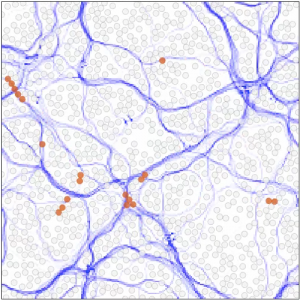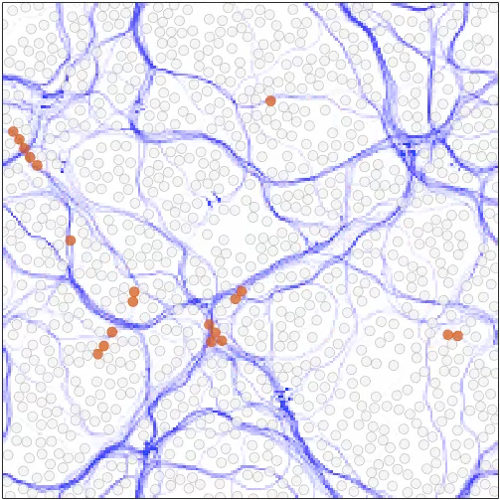
Metastable clusters and channels formed by active particles with aligning interactions
Simon Nilsson & Giovanni Volpe
New Journal of Physics 19, 115008 (2017)
DOI: 10.1088/1367-2630/aa9516
arXiv: 1706.01326
We introduce a novel model for active particles with short-range position-dependent aligning interactions and study their behaviour in crowded environments using numerical simulations. When only active particles are present, we observe a transition from a gaseous state to the emergence of metastable clusters as the level of orientational noise is reduced. When passive particles are also present, we observe the emergence of a network of metastable channels.
